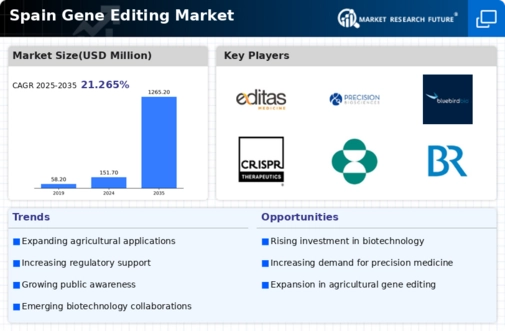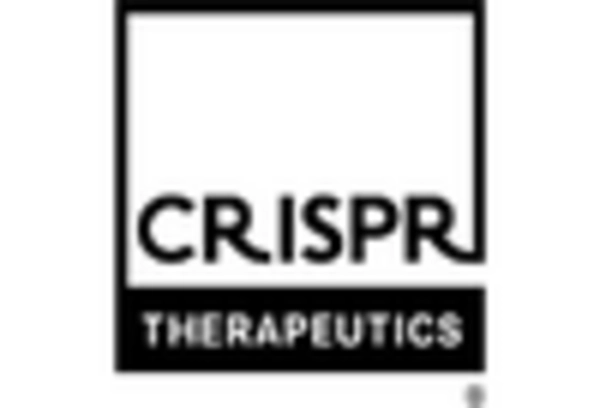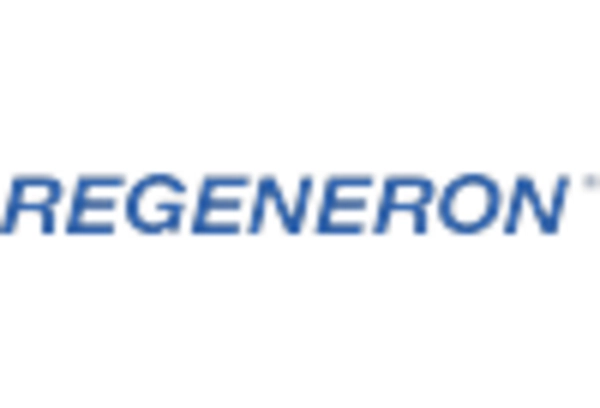Advancements in Biotechnology
The gene editing market in Spain is experiencing a surge due to rapid advancements in biotechnology. Innovations in CRISPR technology and other gene editing tools are enhancing precision and efficiency in genetic modifications. This progress is likely to attract significant investments, with the biotechnology sector projected to grow at a CAGR of approximately 10% over the next five years. As research institutions and biotech companies collaborate, the gene editing market is expected to expand, fostering new applications in agriculture, medicine, and environmental science. The increasing availability of advanced tools and techniques may lead to breakthroughs in treating genetic disorders, thereby driving demand for gene editing solutions in Spain.
Enhanced Regulatory Frameworks
The gene editing market in Spain is benefiting from enhanced regulatory frameworks that facilitate innovation while ensuring safety and ethical considerations. Recent updates to regulations governing gene editing technologies are designed to streamline the approval process for new applications. This regulatory clarity is likely to encourage investment and research in the gene editing market, as companies gain confidence in navigating the legal landscape. By 2025, it is anticipated that the number of approved gene editing products will increase by 30%, reflecting a more supportive environment for innovation. Such developments may lead to a broader acceptance of gene editing solutions across various sectors, including healthcare and agriculture.
Increasing Agricultural Applications
The gene editing market in Spain is witnessing a notable increase in agricultural applications. With the growing need for sustainable farming practices and food security, gene editing technologies are being utilized to develop crops that are more resilient to climate change and pests. The Spanish agricultural sector is projected to adopt gene editing solutions at an accelerated pace, with an estimated market value of €300 million by 2027. This shift is likely to enhance crop yields and reduce reliance on chemical pesticides, aligning with environmental sustainability goals. Consequently, the gene editing market is expected to play a pivotal role in transforming agricultural practices in Spain.
Rising Demand for Precision Medicine
The gene editing market in Spain is significantly influenced by the rising demand for precision medicine. As healthcare evolves towards personalized treatment approaches, gene editing technologies are becoming essential for developing targeted therapies. The market for precision medicine is projected to reach €2 billion by 2026, indicating a robust growth trajectory. This trend is likely to drive the gene editing market, as healthcare providers seek innovative solutions to tailor treatments based on individual genetic profiles. The integration of gene editing into clinical practices may enhance patient outcomes and reduce healthcare costs, further solidifying its role in the future of medicine in Spain.
Growing Investment in Research and Development
Investment in research and development (R&D) is a critical driver for the gene editing market in Spain. The Spanish government has recognized the potential of gene editing technologies and is allocating substantial funding to support R&D initiatives. In 2025, public and private sector investments in biotechnology R&D are estimated to exceed €500 million, reflecting a commitment to fostering innovation. This influx of capital is likely to enhance the capabilities of research institutions and startups, enabling them to explore novel applications of gene editing. As a result, the gene editing market is poised for growth, with an increasing number of projects aimed at addressing pressing health and agricultural challenges.

















Leave a Comment